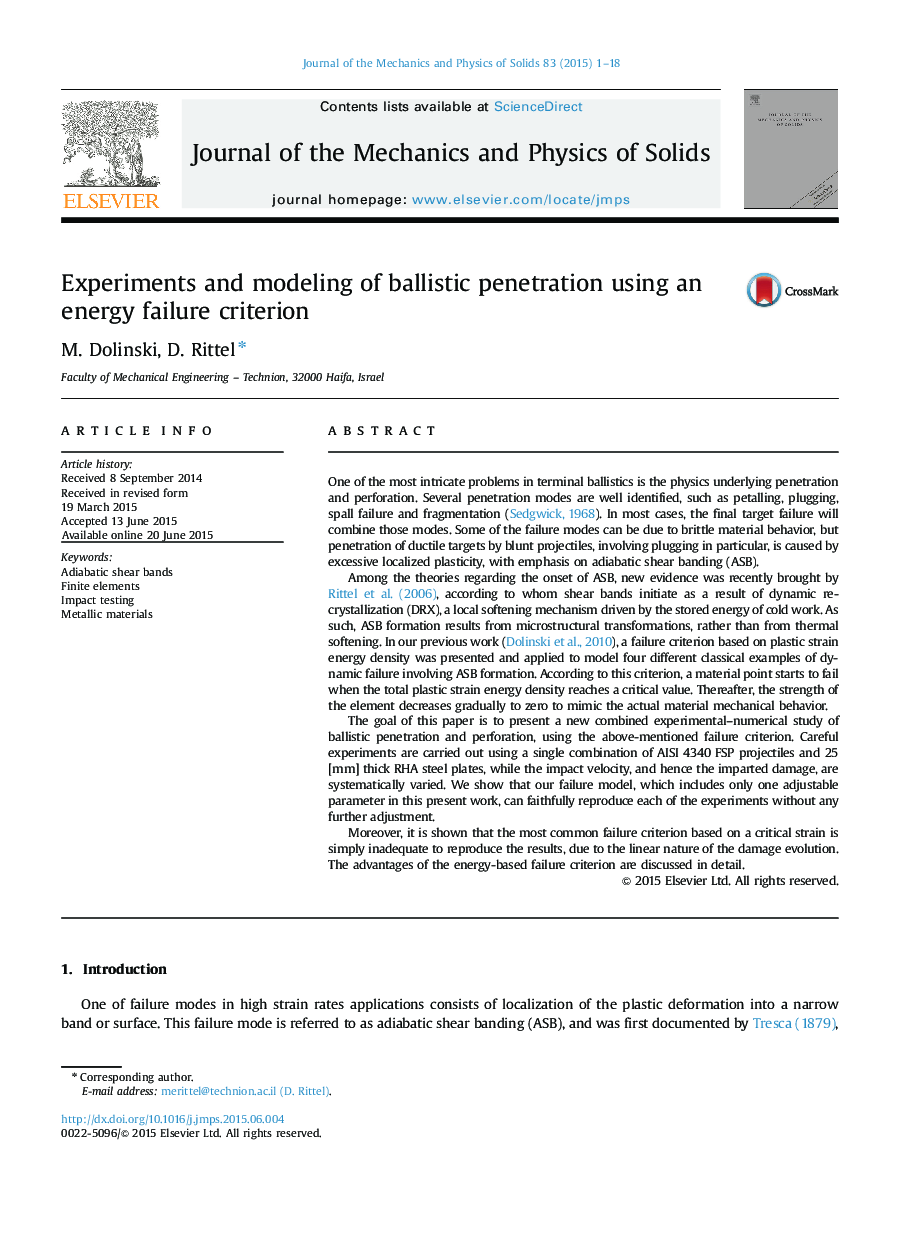| کد مقاله | کد نشریه | سال انتشار | مقاله انگلیسی | نسخه تمام متن |
|---|---|---|---|---|
| 792981 | 1467060 | 2015 | 18 صفحه PDF | دانلود رایگان |
One of the most intricate problems in terminal ballistics is the physics underlying penetration and perforation. Several penetration modes are well identified, such as petalling, plugging, spall failure and fragmentation (Sedgwick, 1968). In most cases, the final target failure will combine those modes. Some of the failure modes can be due to brittle material behavior, but penetration of ductile targets by blunt projectiles, involving plugging in particular, is caused by excessive localized plasticity, with emphasis on adiabatic shear banding (ASB).Among the theories regarding the onset of ASB, new evidence was recently brought by Rittel et al. (2006), according to whom shear bands initiate as a result of dynamic recrystallization (DRX), a local softening mechanism driven by the stored energy of cold work. As such, ASB formation results from microstructural transformations, rather than from thermal softening. In our previous work (Dolinski et al., 2010), a failure criterion based on plastic strain energy density was presented and applied to model four different classical examples of dynamic failure involving ASB formation. According to this criterion, a material point starts to fail when the total plastic strain energy density reaches a critical value. Thereafter, the strength of the element decreases gradually to zero to mimic the actual material mechanical behavior.The goal of this paper is to present a new combined experimental–numerical study of ballistic penetration and perforation, using the above-mentioned failure criterion. Careful experiments are carried out using a single combination of AISI 4340 FSP projectiles and 25[mm] thick RHA steel plates, while the impact velocity, and hence the imparted damage, are systematically varied. We show that our failure model, which includes only one adjustable parameter in this present work, can faithfully reproduce each of the experiments without any further adjustment.Moreover, it is shown that the most common failure criterion based on a critical strain is simply inadequate to reproduce the results, due to the linear nature of the damage evolution. The advantages of the energy-based failure criterion are discussed in detail.
Journal: Journal of the Mechanics and Physics of Solids - Volume 83, October 2015, Pages 1–18
